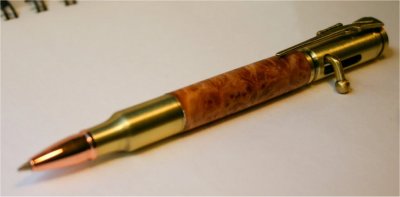CHRONIC CANINE ALLERGIES and INFECTION, SKIN ISSUES
There is a lot of very routine, “do them every time” profitable testing for allergies, and then biopsies for fungus, bacterial infection and inflammation which practically always lead to the same panel of eight treatments.
This conversation about chronic allergies and infections, gets VERY short if any of the following three OBVIOUS conditions exist:
- Fleas discovered on pet or in environment
- Smoking around the pet triggers massive atopic itching
- People food, especially nitrites in spiced meats, triggers allergies and worsens skin problems.
Even though there are TONS of tests to run, only a few are really important.
IMHO Testing should be done to confirm a suspicion, not prove what it isn’t.
- In chronic skin cases, THYROID testing is the most important test.
- If the dog seems to have Cushing’s Disease, that’s not hard to rule out, either and doesn’t necessarily require a lot of expensive testing. Your Vet can advise, but there are many “more than one way to skin a cat”.
I find it surprising, interesting, and even lazy, that after all the biopsies of the skin, whether they find mange, ringworm, pyoderma, allergic or atopic inflammation, or not – the dogs with chronic skin problems USUALLY end up on ALL the treatments for ALL of them ANYWAY. So what was the point of spending a thousand dollars in testing, just to automatically put the dogs on the following EIGHT things ANY WAY?
- Hypo-allergenic diets without chicken or grain, or better-still: Made with hydrolyzed proteins. -AND-
- Administration of Ivermectin or practically identical products (Macrocyclic lactones: selamectin, moxidectin) every day, week or month at doses sufficient to be parasiticidal. (Mitacidal) -AND-
- Antihistamine therapy -AND-
- Oral flea control of the most stringent kind. NexGard for example. -AND-
- Anti-fungal shampoos which are based on Chlorhexidine (Hibiclens) or Sulfur. -AND-
- Removal of carbon-based micropollution with Aloe baby wipes, or even wet bath towels in the bigger dogs. -AND-
- Chronic antibiotic therapy (Not terribly favorable but usually very effective) which can look like one-week-on-and-three-weeks-off or even daily for the long term. -AND-
- Cytopoint =OR= Apoquel (But not both, because the latter cancels the former)
By the way: There is NO SKIN CONDITION (practically speaking) that would NOT respond to the above eight things done automatically all at once.
There is NO SKIN CONDITION (practically speaking) that would NOT respond to the above eight things done all at once.
Here are some “various notes” of some import:
- If Cytopoint is used in skin WHILE IT STILL HAS INFECTION it has a high probability NOT to work. The key is to ‘fix’ the skin with a steroid and an antibiotic and when the skin is “verging on perfect” *THEN* hit them with Cytopoint. *THEN* the results will impress. Cytopoint is quite expensive.
- If a dog has a recurrent skin infection (plus or minus allergies) the suggestion to test thyroid was also a good one because chronic vulnerability to infection is OFTEN a result of low thyroid: Any dog that has a body condition score of 5 and that may ALSO be related to thyroid.
- The “no chicken” thing is a Big Piece as well. Finding a diet without chicken is difficult because EVEN THE SALMON DIETS often use CHICKEN FAT. So “no chicken and grain free” is good advice but you have to scour the label for hidden chicken products.
- Sulfur based shampoos and such are good because sulfur is pretty aggressive about ringworms (fungus) and yeasts in the skin.
- Apoquel is associated with a lot of cancer. Cytopoint is not.
- Steroids are “okay” for short term control but on the long term, there are other things you can do. In fact, there is a LONG LIST of things you can do, each of which is at least 15% effective at reducing symptoms and the need for “stronger medications” – seriously, doing any three of them will reduce symptoms by 45% – but resolution of symptoms entirely on the long term is the tricky thing.
This is an older video that needs a “pen and paper” for other ideas:
https://drjohnson.com/chronic-skin-diseases/
 When Your Dog is Itchy There’s “OTC” Stuff You Can Do Safely:
When Your Dog is Itchy There’s “OTC” Stuff You Can Do Safely:
1) Change food to CHICKEN FREE, SALMON-based, GRAIN FREE dry food.
2) Human food (especially processed food) triggers itching in a LOT of dogs.
3) Vitamin C = 500mg per 20 lbs once or twice a day. (Try a chewable smeared with something tasty)
4) Thyroid testing if not already done
5) Hot Towel as needed to “De-Wax and De-Oil and De-Carbon” the dog.
6) Hibiclens Blue Skin Cleanser once a week can ameliorate Sebaceous Adenitis
7) Antihistamines: Benadryl 3x day, or Zyrtec 2x day, or Allegra 1x day.
Highly Recommended Prescription / Veterinary Interventions: May Benefit From One or Several Of
1) Cytopoint
2) Apoquel (Risk)
3) Steroid (Methyl pred acetate or similar)
4) Oral antibiotics possibly long term
5) Thyroid replacement





